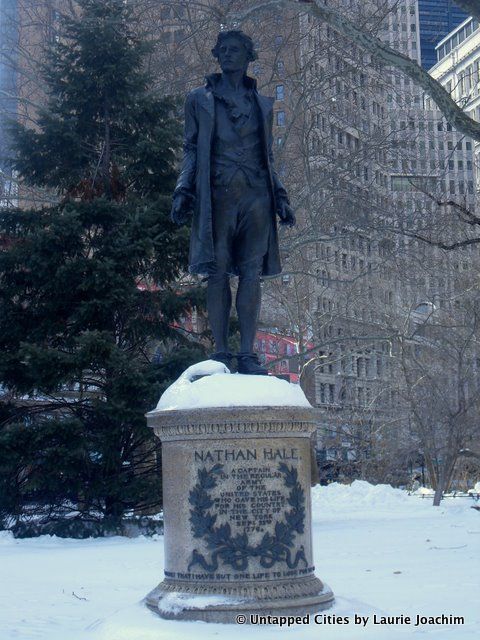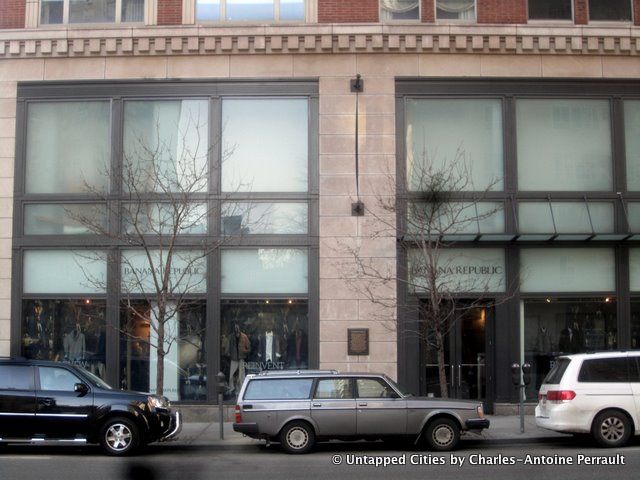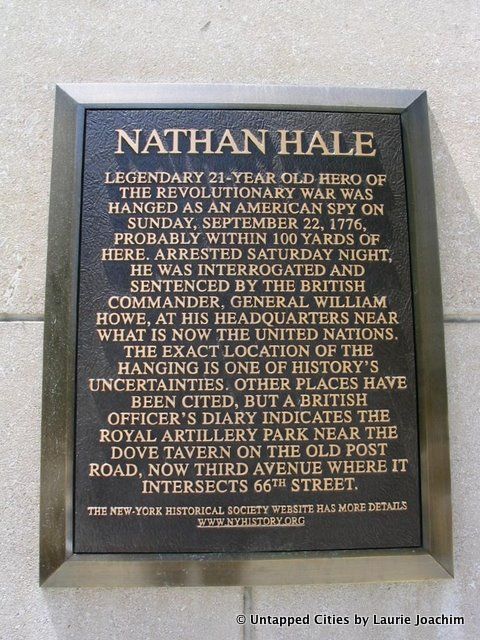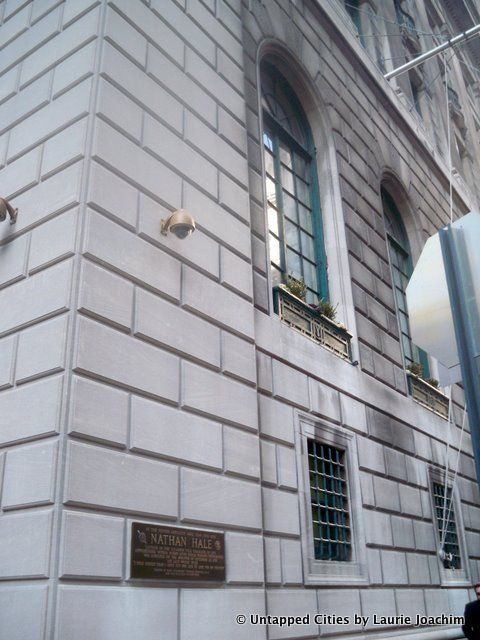Last-Minute NYC Holiday Gift Guide 🎁
We’ve created a holiday gift guide with presents for the intrepid New Yorker that should arrive just in time—


New Yorkers race from one place to the next and we miss a lot in our rush to get to the next thing. But I’ve found some places in the city where I always stop and reflect. It’s especially powerful when it’s a remembrance of New York’s past and its place in history. Two plaques in the city take me back to the Revolutionary War. They honor young Nathan Hale, captured and hung by the British during the war. Much of the Revolutionary War was fought in Manhattan. The British actually controlled it for a good portion of the war. It’s hard for me to imagine battles here; to erase all the buildings in my mind and make Manhattan a big open field. Nathan Hale played an important role in the battle for New York and we still honor his legacy and final words today–“I only regret that I have but one life to lose for my country.”
Nathan was born in Connecticut in 1755 and went to Yale at the age of fourteen. He graduated at eighteen and became a teacher. At the start of the Revolutionary War, he signed up as a First Lieutenant in a Connecticut regiment, serving additionally in Massachusetts and the Boston area. In 1776, he was sent to New York where the British had command of lower Manhattan; Washington and his army were entrenched in what is now Morningside Heights. On September 8, 1776, Hale volunteered to go behind enemy lines in Manhattan to spy on the British and was ferried over to the city four days later. His cover was as a schoolmaster looking for work and he brought along his college diploma. He landed on Long Island near Huntington, or Oyster Bay, and directed the boatman to return on September 20th. He made his way into New York, and there, for a week or more, went around town gathering information. He returned on the day and time agreed upon, and awaited his boat.
A boat appeared and he thought it was his regimen, but instead it was an English frigate and he was captured. All his spy notes and documents, written in Latin, were hidden in his clothes and shoes. There are other speculations of how he was captured. One is that he was turned in by his cousin who was a British sympathisizer. Another was that he was recognized by a British officer and arrested.
It was an unfortunate time to be caught. In late September, a devastating fire had swept through lower Manhattan. Many thought Patriots had sent the fires to flush the British out. Two hundred people were rounded up in connection with starting the fires. As a result, General Howe of the British Army was not going to take the time to figure out what to do with Nathan Hale, the American spy.
There was no trial. The papers found on Nathan were enough evidence and he admitted to being a Patriot. He was out of uniform and behind enemy lines and under the existing rules of war, he was subject to execution without trial. Nathan spent the night of September 21st in a greenhouse in the garden on the grounds of Beekman Mansion in Turtle Bay, where General Howe had his headquarters. This is thought to be in the area of what is now 50th and 51st streets between 1st and 2nd avenue. He asked for a Bible and was refused. He asked for a clergyman and was refused. He asked for writing material to write a letter to his mother and brother. The British allowed him this, but later destroyed the letters.
On the morning of September 22nd, 1776, he was marched out and taken to be hung. The exact location of this is unknown. Some historians have it around 3rd Avenue and 66th Street. Some believe it is closer to what is now Grand Central. And even others have it downtown near East Broadway. But it is known that he behaved like a gentleman and was eloquent and proud. He was given a chance to speak and that is when he uttered his immortal line–“I only regret that I have but one life to lose for my country.” Nathan was 21 years old.
The British hung Nathan on an apple tree and left his body as an example to others. The body was never recovered and was not buried with a marker. Nathan’s final resting place is unknown. He has a large cenotaph in the fittingly named Nathan Hale Cemetery in Tolland County, Connecticut. There is also some question of the exact phrasing and the documentation of what he said in his final minutes. A British soldier who witness the hanging later told American soldier William Hull of the speech and it was Hull who publicized Nathan’s last words and made Nathan’s patriotism famous. Other historians believe he might have been quoting a passage from Joseph Addison’s play Cato which has the lines:
How beautiful is death, when earn’d by virtue!
Who would not be that youth? What pity is it
That we can die but once to serve our country.
America honors Nathan Hale in many ways. Even though there were no paintings of him to inform of his physical likeness, there are statues of him all the country. Yale, of course, has one in front of Connecticut Hall where he lived as a student. City Hall Park in New York, Tulane University in New Orleans and Chicago Tribune Tower all have statues of Nathan Hale. Since Nathan began his career as a teacher, schools all over the country are named for him. Numerous dormitories, barracks and parks bear his name and he has graced a United States postage stamp as well.

Aside from the statue in City Hall Park, (which is difficult to get to since it is in an area of the park which is blocked off from the public), New York has honored Nathan Hale with two plaques. Both plaques claim that it marks the site where he was hung, but no one will ever know for sure. One plaque is hidden away on Vanderbilt Avenue next to Grand Central. It is located on the facade of the Yale Club building, which of course, is apropos since Nathan was an alumni.


The other plaque is located on a building now that now houses a Banana Republic on 3rd Avenue and 65th Street.


I think the plaque on Vanderbilt is my favorite. It is quiet there; the hustle of the city is a bit muted on the side street under the shadow of Grand Central. Whenever I am feeling a dose of self pity or am having a bad day and need to remind myself how grateful I should be to get to live the life I have, I take a walk to that plaque and remember Nathan Hale.

For another great series of plaques (also incidentally close to Grand Central), check out the Library Walk.
2013 Update: The Banana Republic now houses a Pier 1 Imports
Subscribe to our newsletter